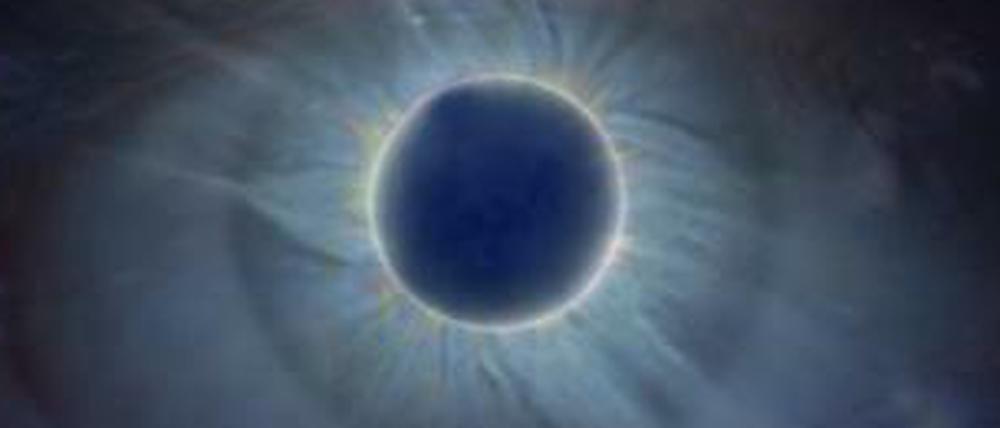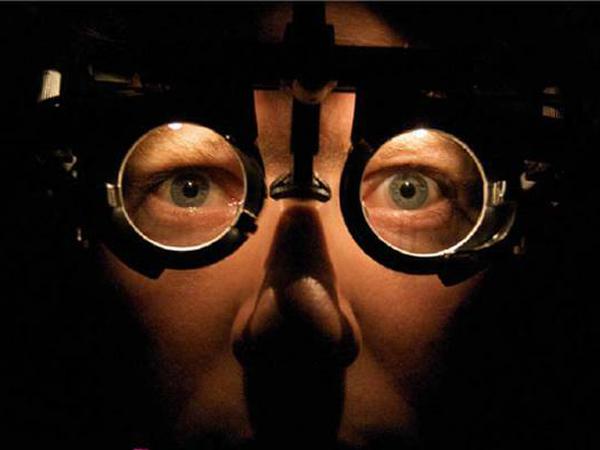
© .
"Going Dark" at the Science Museum: Journey to the end of the universe
Sound&Fury's "Going Dark" completed a five day run at the Science Museum in London on Sunday. Co-directing the piece was the Tagesspiegel's very own Mark Espiner. Ramona Mosse reports from London.
KA-BOOM! It starts with a deafening thunderbolt in the pitch black of the auditorium at the Science Museum. With that bolt, the theatre company Sound&Fury embarked on a five-day run of "Going Dark", an ambitious theatrical experiment that takes the spectator on a whirlwind tour through the universe. Teaming up with writer Hattie Naylor for the production, the artistic team behind Sound & Fury are Dan Jones (co-director and sound designer), Mark Espiner (co-director) and his brother Tom Espiner (performer and co-creator). Their theatre company specializes in immersive theatre, tackling complex topics and pushing the boundaries of what is possible on stage. From staging ballads of the Trojan War to nuclear submarine disasters, total darkness is a key feature of their theatrical work.
Journeys into outer space are feats of technology – both in reality and in art. From Stanley Kubrick’s 2001: Space Odyssey to Alfonso Cuarón’s 3-D extravaganza Gravity—cinema rather than theatre tends to create elaborate visual worlds beyond all gravitational pull. Going Dark’s journey into space instead makes darkness itself its most captivating and basic theatrical tool. As the lights go out, we as spectators question what it means to be in the theatre.

© .
Darkness shapes this one man-show. It is part of the story of Max (Tom Espiner), the astronomer and planetarium guide, who while gazing at the stars descends into blindness. He fears the inevitable loss of control over his life. Most of all, he fears losing the ability to take care of his little son Leo, whom the audience encounters merely as a voice (pre-recorded, the voice of Espiner’s then six-year old son) moving through space. Leo himself could not be more present in the excitement with which he tries to make sense of our galaxy, the Milky Way, and the lightning speed with which we are spinning into the ever-expanding universe: “the sky is not black, it is a very very very very very very very very dark blue.” We feel with Tom Espiner’s Max in his struggle to cope with his rapidly progressing disability, but we are in love with Leo and his cosmological chatter. In the dark, it is the recorded voice of Leo which seems the most tangible character.
Darkness determines our ability to see the universe, Max explains in one of his lectures. Only at night can we locate the stars, and the immensity of the universe becomes clear to us. Cleverly staged in the round, the theatrical audience doubles up as the audience to Max's lectures, staring up at a miniature planetarium above their heads. The stage is no longer in front but rather above, below and all around. Guy Hoare’s imaginative lighting as well as Dan Jones’ intricate surround sound design rebuild the stage repeatedly, placing the audience centre stage. Our experience, rather than the characters’ is what Sound&Fury, explore. The theatre takes place in our heads.
Darkness here is more than a prelude to performance that hushes the spectators before the curtain rises. Theatre is no longer a place of seeing that equals understanding. Instead, Going Dark shakes up how and what we perceive and know. The journey through galaxies becomes a metaphor for what happens when our most basic assumptions do not make sense anymore. As he goes blind, Max faces a threatening chaos of noise rushing towards him. Only gradually does he find his way in a world of sound.
Going Dark is a beautifully composed piece of light and sound, of big science and personal loss. Its technological sophistication leads back to fuelling our own imagination. When the lights go up for the curtain call, they seem harsh, bright and disorienting. And we feel ourselves sucked back into our seats from a journey just a little bit beyond all gravitational pull. Let’s hope it travels to Berlin…
- showPaywall:
- false
- isSubscriber:
- false
- isPaid:
- showPaywallPiano:
- false